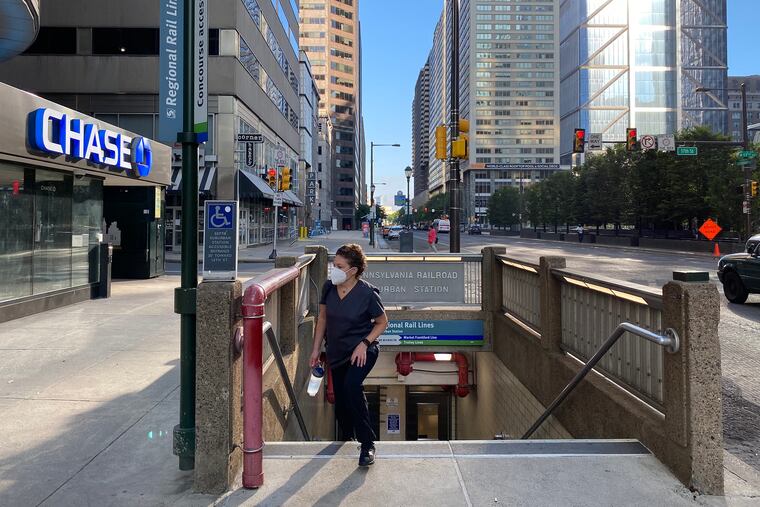High fares for Regional Rail riders create a ‘tale of two transit systems’ in Philadelphia | Opinion
SEPTA runs two parallel systems: one for higher-income riders that is disproportionately white, the other for everyone else.

We hear a lot about critical race theory these days. Until recently, this was just another esoteric academic school of thought. And while we might debate the finer points of this theory, one aspect of the larger discussion should not be controversial at all. Systemic racism is, and has always been, a fact of life in the United States. In my racially and economically diverse neighborhood of Mount Airy, this truth is all too painfully apparent. Every time my family leaves our unique enclave in Northwest Philadelphia, we are reminded of just how rare such diversity is.
Just take a ride on SEPTA’s Regional Rail in the city, and compare that with the ride on a SEPTA bus. It’s striking how much whiter and more privileged the Regional Rail ridership appears to be. This is not just a tale of geography — wealthy suburban vs. lower-income inner-city riders. A large portion of the expansive Regional Rail system lies within the city. The inner-ring of the Regional Rail system serves many of the same urban neighborhoods served by other SEPTA transportation and offers faster trips to key hubs with much less crowding (and more social distancing) than buses and subways. Nonetheless, from my experience riding Regional Rail for more than 10 years, the divide is stark.
» READ MORE: SEPTA passes a budget intended to draw back riders
It is no wonder the systems are segregated. One is priced at a relatively affordable $2 per trip, the other is simply too expensive for many Philadelphians: The cheapest standard ticket on the Regional Rail is $4 per trip. SEPTA could easily remedy this situation by lowering Regional Rail fares in the city to match those of other SEPTA transportation, as suggested in a petition by the organization 5th Square (of which I am a contributing member) signed by close to 1,500 people. At minimum, SEPTA could lower fares for Zone One — the area most likely to encompass lower-income, high-density neighborhoods closest to Center City — while keeping the higher prices (and revenue) for wealthier suburban riders who live further from the city. And now is a great time to do so, as Regional Rail ridership is struggling to rebound from a dramatic COVID-induced drop. The need to bring riders back is urgent. Pricing parity has the potential to do this.
Philadelphia has an extensive Regional Rail network that should be the envy of other American cities — an incredible asset that could be utilized to aggressively reduce congestion on our roads, increase access to affordable housing, fight climate change, and promote social equity by making convenient, efficient transportation available to all. Instead, we squander what we have.
» READ MORE: Let students ride SEPTA for free all day, every day | Opinion
SEPTA runs two parallel systems in the city of Philadelphia. One is for higher-income riders and is disproportionately white, the other is for everyone else. One is for white-collar workers who often have the option of working from home, the other for workers who do less-glamorous (but no less essential) work, cleaning our streets and buildings, serving food to visitors and residents, and staffing our hotels, retail stores, and nursing homes. The former system is sitting idle, with ridership volume down by roughly 80%, because those who can afford the expensive fares on the Regional Rail often have the option to drive. Unfortunately, those who rely on the latter system don’t have the privilege of treating public transportation as an optional luxury good.
The two systems may transport passengers to and from many of the same places. But they are separate and unequal. Without cheaper rail fares, it’ll stay that way.
Wayne Batchis is an associate professor of political science and constitutional law at the University of Delaware, where he commutes from Mount Airy on the SEPTA Regional Rail.
The Philadelphia Inquirer is one of more than 20 news organizations producing Broke in Philly, a collaborative reporting project on solutions to poverty and the city’s push toward economic justice. See all of our reporting at brokeinphilly.org.